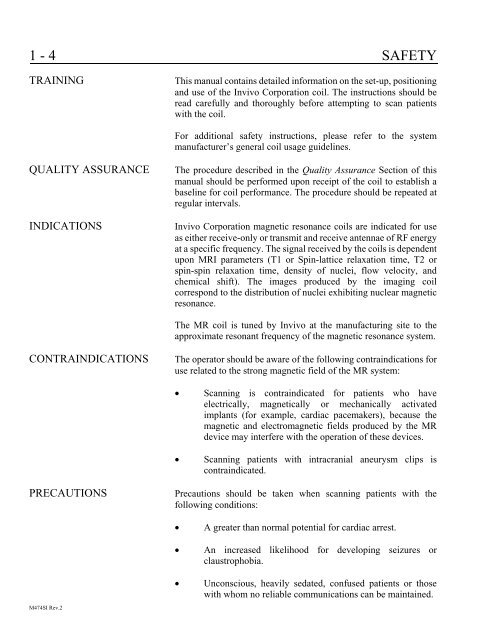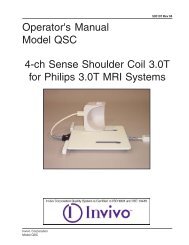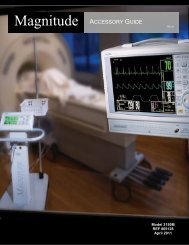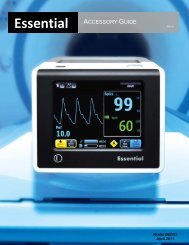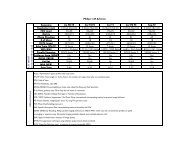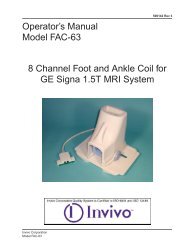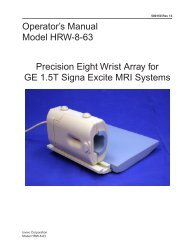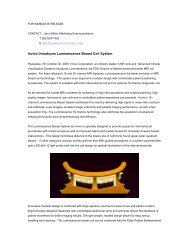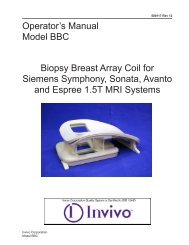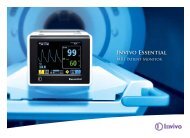View Operators Manual - Invivo
View Operators Manual - Invivo
View Operators Manual - Invivo
- No tags were found...
Create successful ePaper yourself
Turn your PDF publications into a flip-book with our unique Google optimized e-Paper software.
1 - 4 SAFETYTRAININGThis manual contains detailed information on the set-up, positioningand use of the <strong>Invivo</strong> Corporation coil. The instructions should beread carefully and thoroughly before attempting to scan patientswith the coil.For additional safety instructions, please refer to the systemmanufacturer’s general coil usage guidelines.QUALITY ASSURANCEINDICATIONSThe procedure described in the Quality Assurance Section of thismanual should be performed upon receipt of the coil to establish abaseline for coil performance. The procedure should be repeated atregular intervals.<strong>Invivo</strong> Corporation magnetic resonance coils are indicated for useas either receive-only or transmit and receive antennae of RF energyat a specific frequency. The signal received by the coils is dependentupon MRI parameters (T1 or Spin-lattice relaxation time, T2 orspin-spin relaxation time, density of nuclei, flow velocity, andchemical shift). The images produced by the imaging coilcorrespond to the distribution of nuclei exhibiting nuclear magneticresonance.The MR coil is tuned by <strong>Invivo</strong> at the manufacturing site to theapproximate resonant frequency of the magnetic resonance system.CONTRAINDICATIONSThe operator should be aware of the following contraindications foruse related to the strong magnetic field of the MR system:• Scanning is contraindicated for patients who haveelectrically, magnetically or mechanically activatedimplants (for example, cardiac pacemakers), because themagnetic and electromagnetic fields produced by the MRdevice may interfere with the operation of these devices.• Scanning patients with intracranial aneurysm clips iscontraindicated.PRECAUTIONSPrecautions should be taken when scanning patients with thefollowing conditions:• A greater than normal potential for cardiac arrest.• An increased likelihood for developing seizures orclaustrophobia.• Unconscious, heavily sedated, confused patients or thosewith whom no reliable communications can be maintained.M474SI Rev.2


